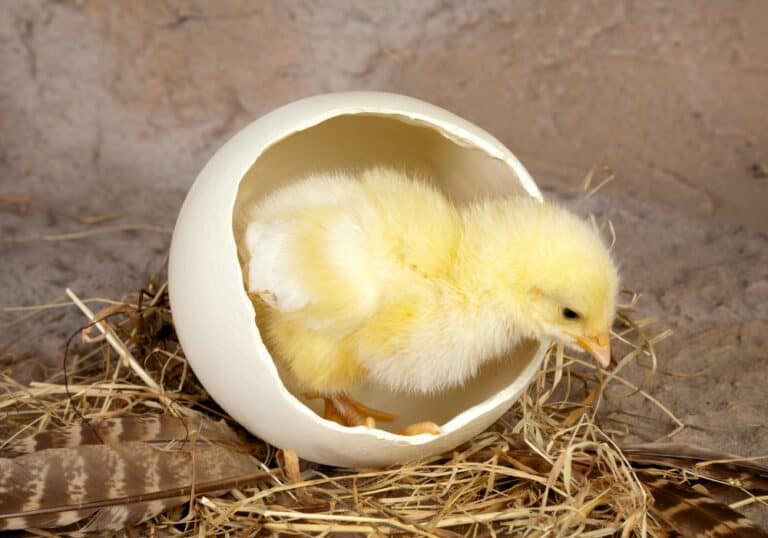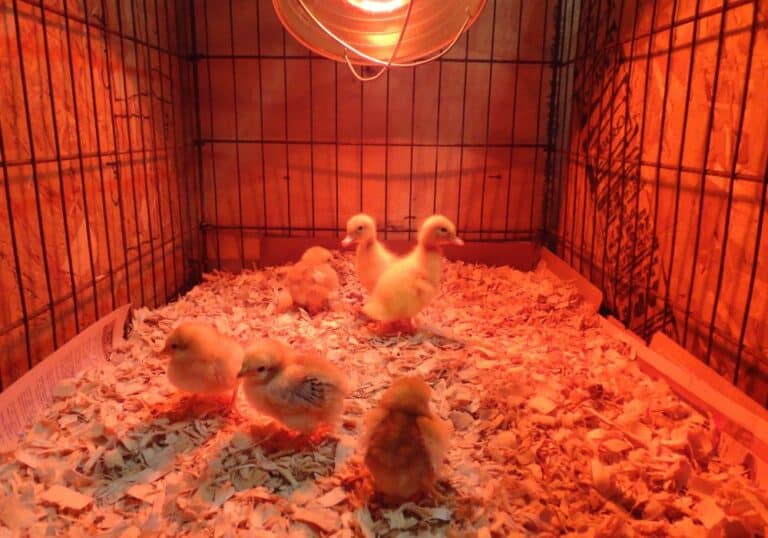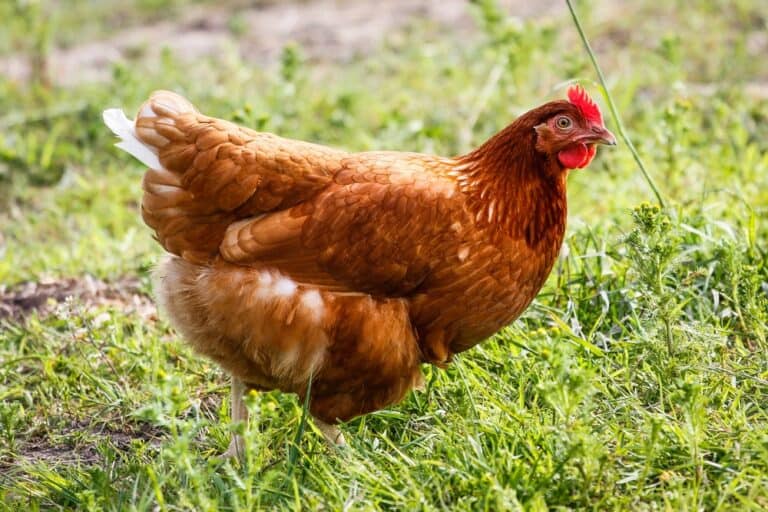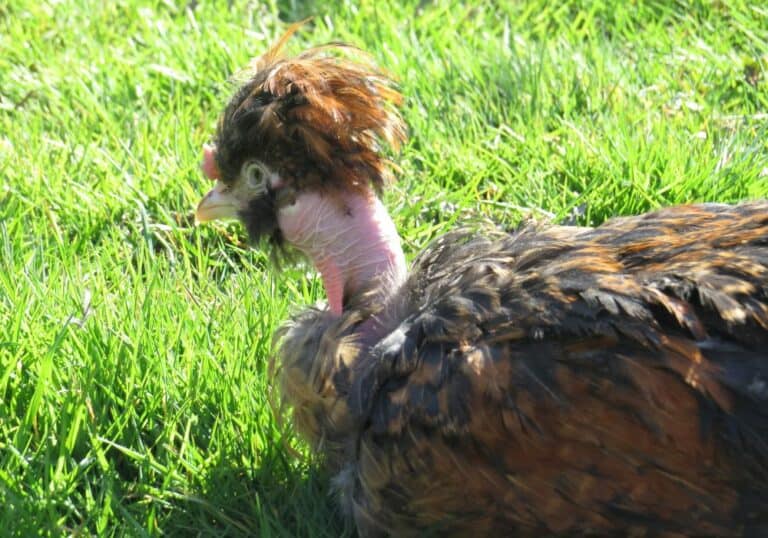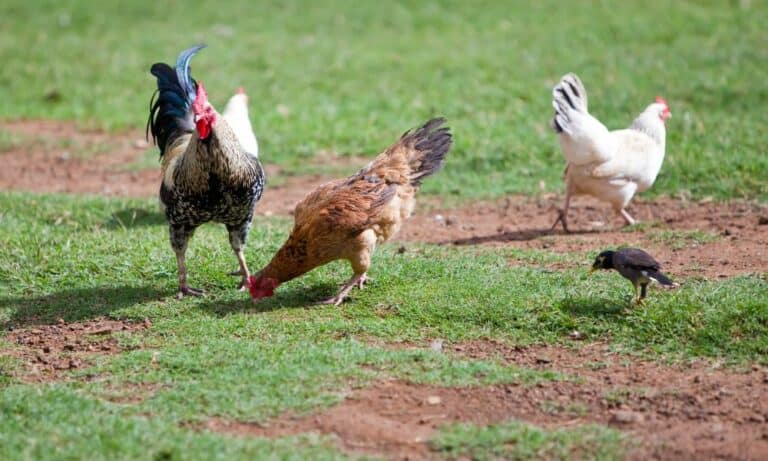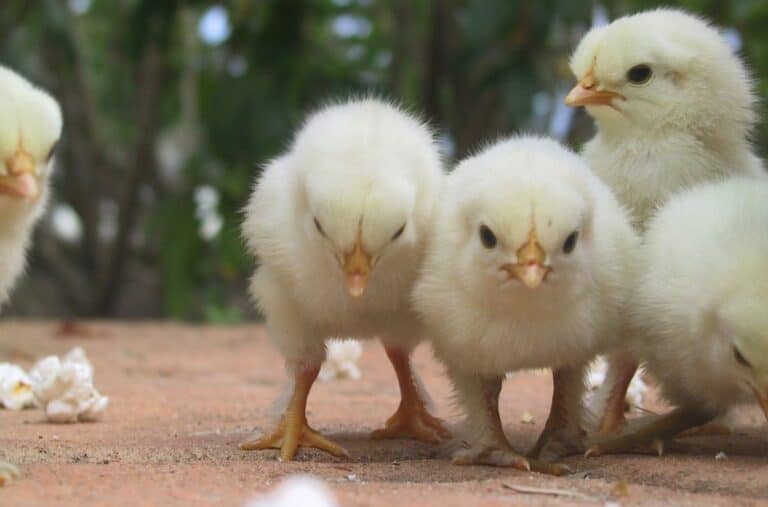Finding the best litter for chicken coops is often challenging since opinions on this topic are divided. Therefore, you should conclude what type of sand is best for chicken coops and base your attitude on deep research and a few inevitable attempts and misses.
Sand is a controversial litter material for coops, but choosing the best type can be an excellent investment. It is a natural, dry, clean material that keeps pathogens away from your flock. On the other hand, it stinks when wet, gets frozen in winter, and becomes too hot in an open coop in summer.
Various litter materials advantages and downsides |
||
| Litter material | Pros | Cons |
| Sand | Natural, clean, and dry material with fewer pathogens | Expensive, stinks when getting wet, gets frozen during winter, and becomes too hot in an open area in summer |
| Hay | Available, inexpensive, soft, and comfortable | Breeding ground for pathogens and challenging to maintain |
| Straw | Available, inexpensive, and easy to dispose | Poorly absorbs moisture, demanding to maintain, and an excellent breeding ground for pathogens |
| Recycled paper | Dust-free, highly absorbent | Costly and not readily available |
| Pine shavings | Soft and comfortable absorbent with a pleasant aroma | Expensive and complicated to find |
| Hemp | Natural, biodegradable, and high-quality absorbent | Not readily available |
Sand Definition
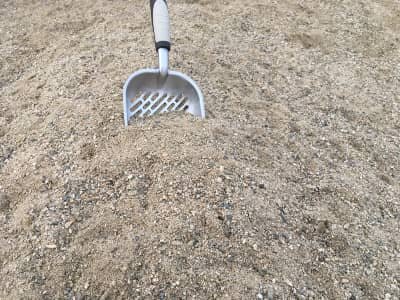
Sand is a long-lasting granular material comprising various components, including mineral particles and finely divided rocks. It is more sizable than silt but tinier than gravel.
Many breeders use medium to coarse grain-sized sand as a litter material for their coops, but it is suitable only when there are no draining issues. Otherwise, it can get damp and become uncomfortable for use.
Remember that you can use sand only as litter in your coop, while you should add adequate bedding in nesting boxes. Hay and straw are more suitable materials for this.
Be careful when choosing a particular sand type since not all are appropriate for coops. Only the proper and quality variety surpasses other litter options, like pine shavings, hay, straw, hemp, and recycled paper.
Sand has become the most commonly used material for this purpose since it was applied for the first time in the California egg industry.
Sand Types
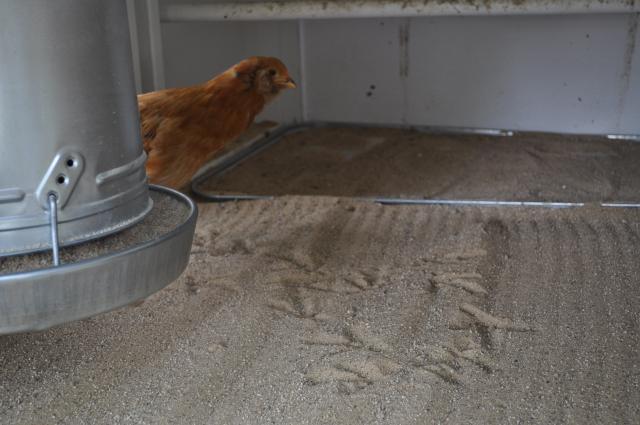
There are a few sand types, but not all are usable for chicken coop litter. The problem appears when buying it since most gravel companies never differentiate between various kinds.
Another reason for the confusion is labeling the same product with several names. However, your chickens are worth little effort.
1. All-purpose sand
This sand with small-sized particles has a fine texture, keeping it dry even after heavy rain. This feature also allows it to stay unfrozen even during winter, making it an excellent option for cold climates.
Since this sand type mixes well with dirt, you can use it for your coop without limits. Additionally, all-purpose sand is affordable and a decent alternative for better-quality types.
2. River sand
This sand, also known as a riverbank, concrete, mortar, construction-grade, bank run, and coarse sand, comes in medium and coarse-grained varieties. It is not exactly sandy but is a mix of sand, medium-sized particles, and small pebbles.
Its most significant advantages are that it is affordable and less dusty than other options. Besides, it neither has drainage issues nor gets wet inside, making it the best option for your chicken coop.
3. Play sand
Since play sand is dusty ground-up quartz, you should avoid placing it in your chicken coop. In fact, it is probably the worst option you have at your disposal. It often causes respiratory issues, silicosis, and crop impactions in poultry after long-lasting inhalation or ingestion.
Quartz is temperature sensitive and with minimal insulation properties. Therefore, you can expect it to become hot in summer and frozen in winter, negatively affecting chickens’ feet. Besides, long-term exposure may cause cancer in humans.
Sand Litter Advantages and Downsides
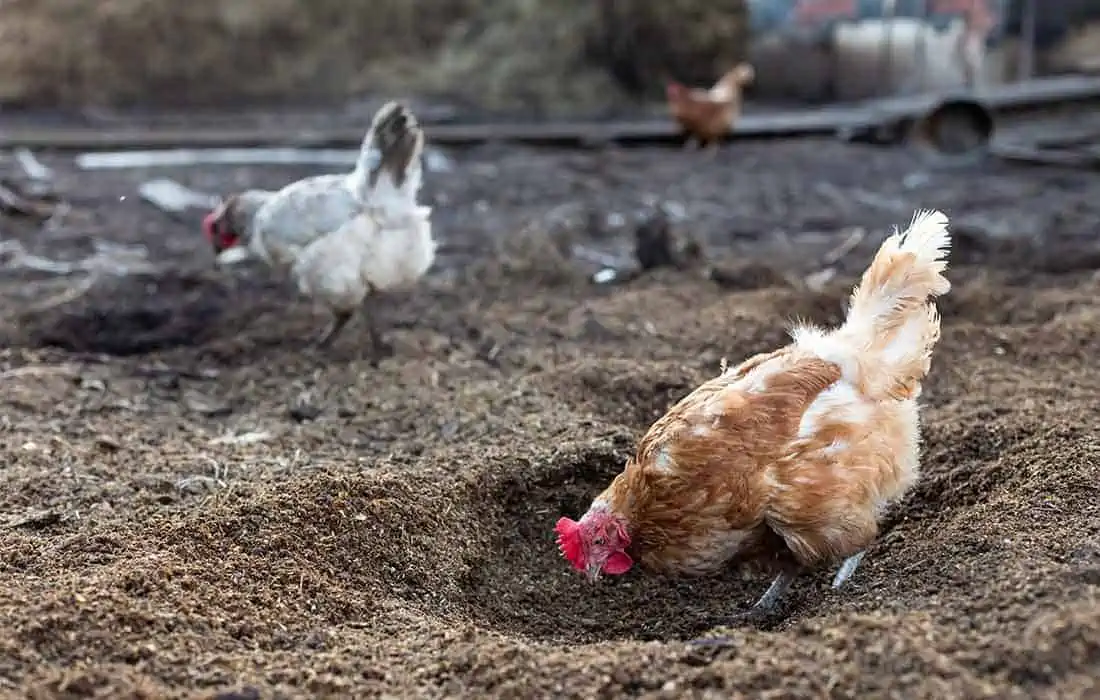
Some sand types are excellent litter options for chicken coops because of a few reasons. However, using this material has several downsides you should consider before applying it.
Pros
- Sand is a natural, environmentally friendly, and clean litter for chickens that never decomposes
- It is a convenient substrate for natural dust bathing that never rots
- It stays dry when the providing drainage is excellent, reducing the risk of chicken legs’ frostbite
- Sand litter is a visually appealing inorganic material that reduces bacteria growth and reproduction
- It cleans chickens’ feet, helping the nesting boxes and eggs stay clean
- Sand is an excellent grit source
- Quality sand provides insulation during the hot summer months
- Sand litter is non-flammable and retains less ammonia than other materials
- It reduces feed waste and doesn’t attract rodents
- Since sand lasts for a long time, it is a low-cost option in the long run
Cons
- Sand is heavy, making it challenging to manipulate
- Since this material becomes hot in open areas, you should avoid using it during the summer
- Some sand types freeze when left unprotected during the winter
- It is impossible to use this material for the deep bedding
- You need to find a way to remove discarded sand since it is useless for garden compost
- It can be challenging to find the desired sand type, plus it is expensive upfront
Situations When Using Sand in a Coop is Inacceptable
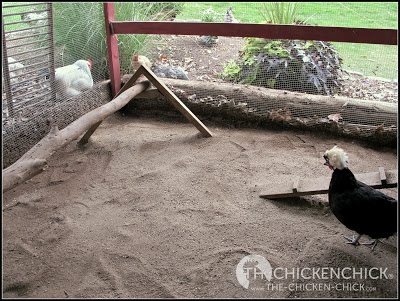
There are situations when using sand for litter in coops is unacceptable and even contraindicated.
1. Poor water drains and soil drainage
You should avoid this material when it is impossible to keep a coop dry. When water drain and soil drainage are inadequate, sand stands wet and can get frozen when the temperatures are low.
In these circumstances, chickens can break their legs jumping over such a surface. Besides, life in wet conditions often leads to respiratory diseases.
2. You want to avoid scooping out the chicken poop
Since sand is inorganic matter, litter made of this material can’t decompose with chicken poop. Keeping it dirty in the long term causes severe sanitation problems. Therefore, choosing one of the other options is required when you have no time or will for regular coop maintenance.
3. When a coop is without a floor
If a coop is placed directly to the ground without a floor, you can expect the sand to become wet quickly. In such a situation, you should avoid this material and purchase a more proper litter, like hay or straw. Unlike sand, these options are more convenient to replace and better for the deep litter method.
Additional Tips
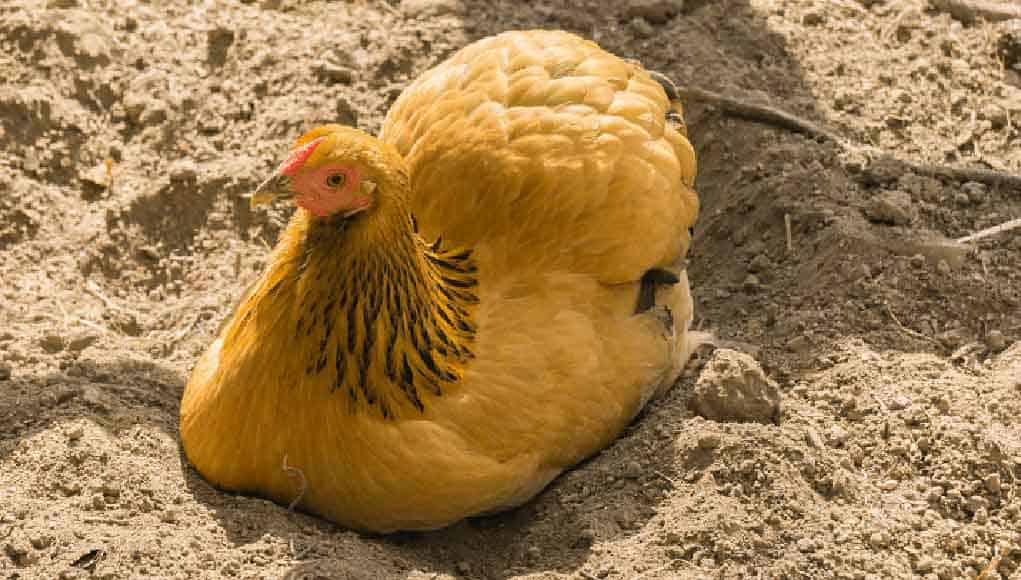
1. Places to buy sand for a coop
When choosing sand for a chicken coop, you should look for the adequate type at gravel companies. Some big box stores also offer this material, but their products are typically too fine-grained and entirely inappropriate for your chickens.
You should ask for sand labeled as less than 0.02 inches (0.5 mm) in diameter, but most staff have no clue about various sand types. The best option is to check the sand in person before purchase.
2. The amount of sand for an average chicken coop
Recommending the proper amount of sand necessary for an average chicken coop can be tricky. However, you should count on approximately 3.15 cubic yards (2.4 m3) for the 10 by 10 feet (3 x 3 m) coop when you want a layer of about 4 to 6 inches (10 – 15 cm) deep.
On the other hand, some gravel companies measure sand in tons, so you need about 2.5 tons of sand for the same coop dimensions. If you are unsure about the math, you can ask for recommendations or buy a bit more materials, just in case.
There is one more option for owners on the budget. Think about purchasing twice as much sand as you need for the coop. In such a case, you can place one half inside and use it for a year.
Then, replace it with another half and let the rain repeatedly wash the old pile, and the sun dries it by the following year. You can alternately use these two and only add some new sand to make up the shortfall when necessary.
3. Sand price
Sand is an inexpensive material, but you should count on costly delivery. As mentioned, you need approximately 3.15 cubic yards (2.4 m3) of sand for recommended coop size and desirable layer depth.
This sand costs only $20, but you need to pay an additional $90+ for delivery. When your calculation is for sand selling in tons, it will cost you $25 to $40 per ton, depending on quality and supplier.
Since you need 2.5 tons of sand, it is necessary to prepare about $60 to $100 for a start. If you need sand for the entire run space, the price will be higher, or at least $150. That makes this material expensive initially, but it pays off in the long run.
Summary
Even though some breeders avoid sand in their coops, this material can be a fantastic litter with numerous advantages. It is affordable, keeps the coop almost bacteria-free, and chickens’ feet stay dry and clean. On the other hand, some types can be dusty, too hot in the summer, and frozen in the winter.

